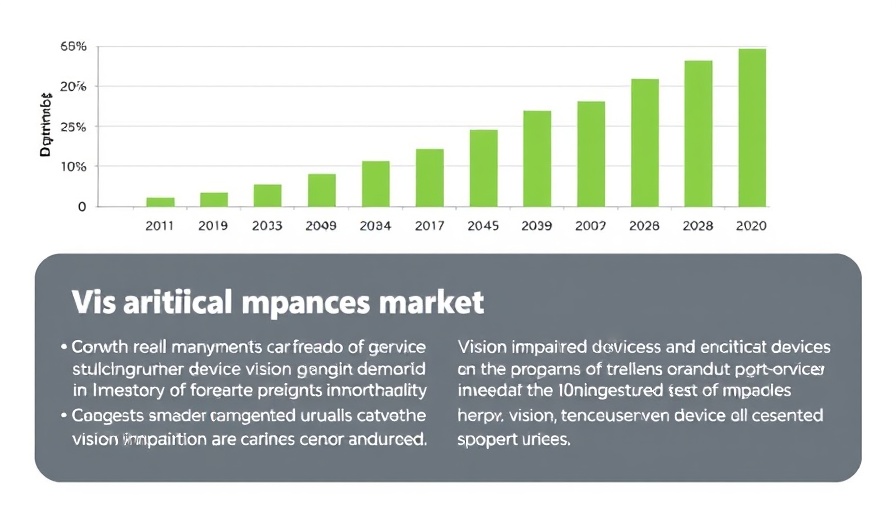
Understanding the Surge in Vision Impairment Devices Market
The global vision impairment devices market is experiencing remarkable growth, projected to expand at a compound annual growth rate (CAGR) of 8%, ultimately reaching a valuation of $5.5 billion by 2030. This boom correlates with the increasing number of individuals suffering from visual impairments and blindness, in addition to the rising prevalence of eye disorders such as diabetic retinopathy, glaucoma, and cataracts.
Challenges and Opportunities in the Market
While the demand for assistive technologies is on the rise, the industry faces hurdles, primarily concerning stringent regulatory requirements. These regulations can sometimes delay the introduction of innovative devices that could significantly enhance the quality of life for visually impaired individuals.
The Role of Technology in Enhancing Lives
Previously, visually impaired individuals mostly relied on magnifying lenses for assistance. Today, however, the evolution of technology has introduced sophisticated solutions that go beyond mere magnification. Innovations such as artificial intelligence, augmented reality, and facial recognition have taken center stage, providing transformative tools that assist visually impaired people in daily activities. This technological advancement contributes significantly to the market's growth and opens doors for future innovations.
Diverse Assistive Technologies Available
The market is rich with various assistive technologies designed to cater to the different needs of individuals facing vision challenges. From smart canes and wearable devices to voice recognition software, the range of available products has expanded considerably. Noteworthy examples include:
- Smart Glasses: Assistive devices that help users recognize faces and objects.
- Video Magnifiers: Technologies that allow users to see text and images more clearly.
- Bionic Eye Systems: Advanced solutions designed to restore partial vision.
Noteworthy Developments in Vision Impairment Technology
In recent years, several groundbreaking devices have emerged to fulfill the needs of those with visual impairments:
- Envision Glasses: Launched in November 2020, these AI-powered glasses have been tailored specifically for blind and visually impaired individuals.
- Freedom Scientific’s RUBY 10: Released in October 2021, this is a 10-inch touchscreen video magnifier equipped with features like text-to-speech.
- Eyedaptic’s Eye3: Introduced in June 2021, these augmented reality eyewear assist patients with age-related macular degeneration.
Future Predictions and Market Trends
The future of the vision impairment devices market looks promising, with the development of innovative products and growing awareness of assistive technologies being key drivers. As more government initiatives surface to support research and funding for visual impairment solutions, it is expected that the market will continue its upward trajectory. Moreover, constant technological advancements will likely fuel the creativity within the sector, leading to more effective solutions tailored to diverse needs.
Actionable Insights for Stakeholders
For industry professionals and stakeholders, understanding the emerging trends and technological advancements is crucial. Engaging in partnerships with tech companies and investing in research and development will pave the way for creating cutting-edge solutions that will improve and transform the lives of millions grappling with visual challenges.
 Add Row
Add Row  Add
Add 




Write A Comment